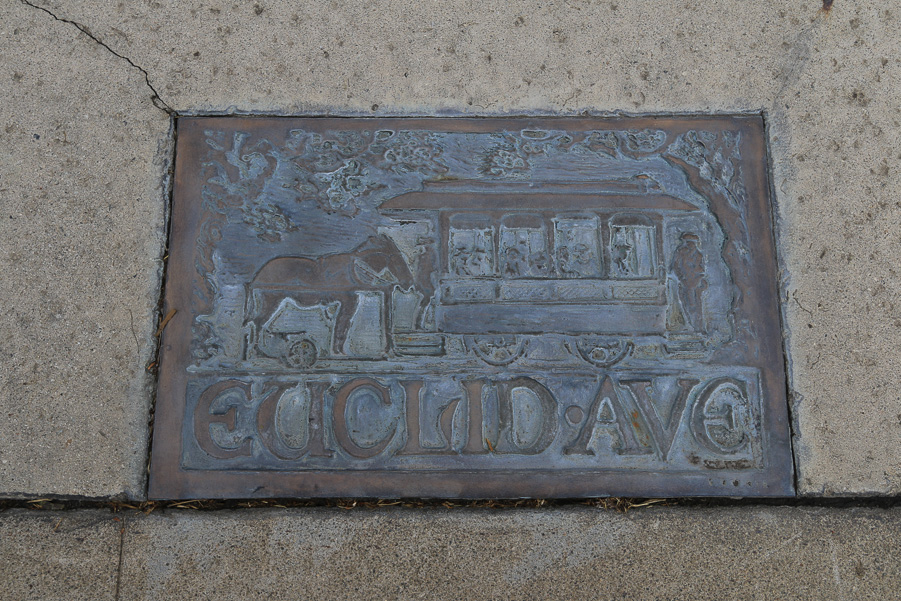August 5, 2020 - Wednesday - Today we drove west to the large city of Ontario, CA to visit its historic district. It was founded in September 1882 by brothers George and William B. Chaffey, and named after their hometown, Ontario, Canada. Since the historic district is large, today we explored the east side of Euclid Avenue and we will later return to see the west side. We were happy with the overcast sky since it kept the heat down.
Ontario Power Co. - 217 S. Lemon Ave. - The Ontario Power Co., est. in 1895, built this building in 1907 for their offices and power house. Later, Edison used the building. During the 1950s, the building was used as the “overflow jail.” It is currently home to the Chaffey Community Museum of Art.
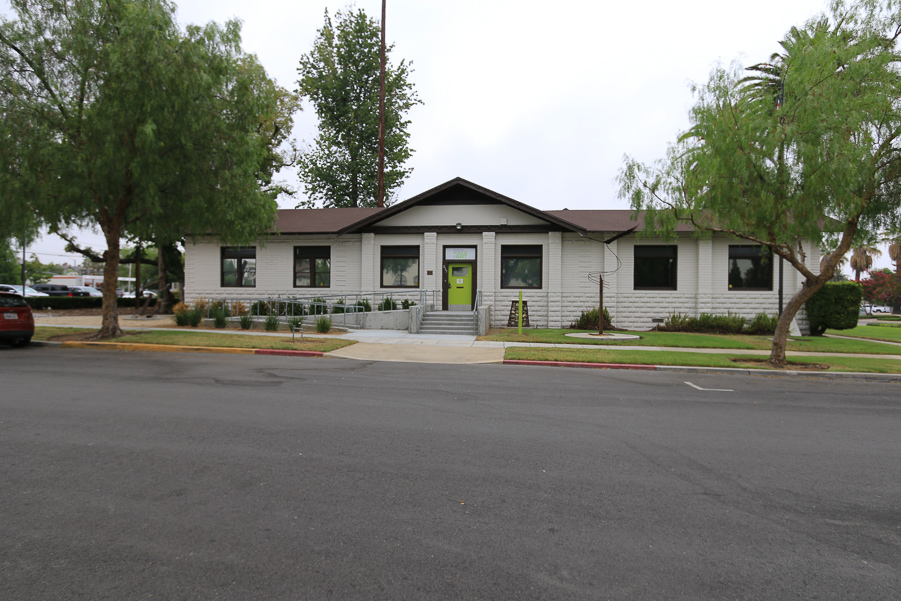
G.E. Hotpoint - 100-400 E. Main Street. - In 1904, Earl Richardson developed the Hotpoint iron. This was the first iron that could heat to the tip, which was most practical for pressing ruffles and pleats. In 1917, the Edison Electric Appliance Co. merged with the Hotpoint Electric Heating Company.
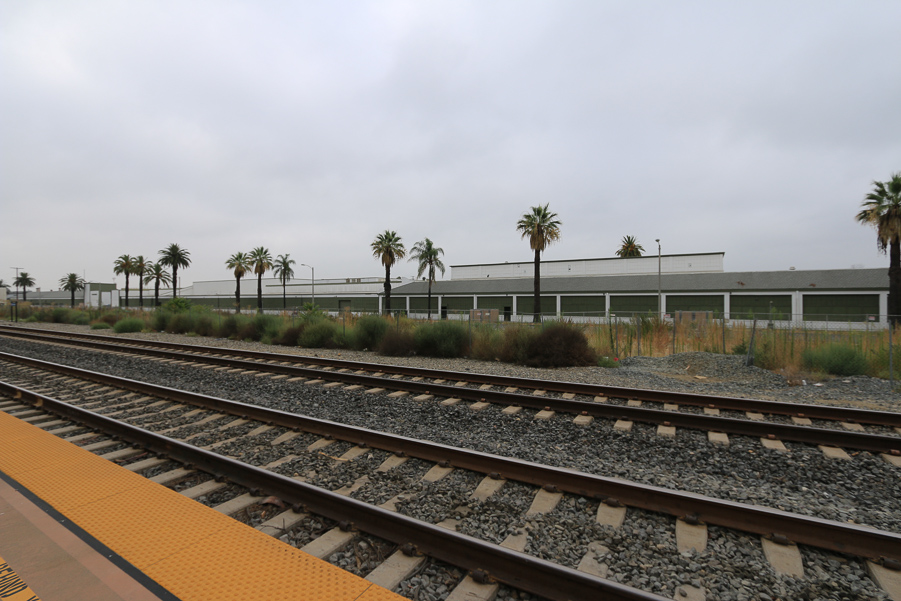
Ontario City Hall - 225 S. Euclid Ave. - Built in 1937 with WPA funds, this Mediterranean style building served as City Hall until 1979. The Council Chamber remains intact with wooden auditorium seats. It is currently home to the Museum of History and Art, Ontario.
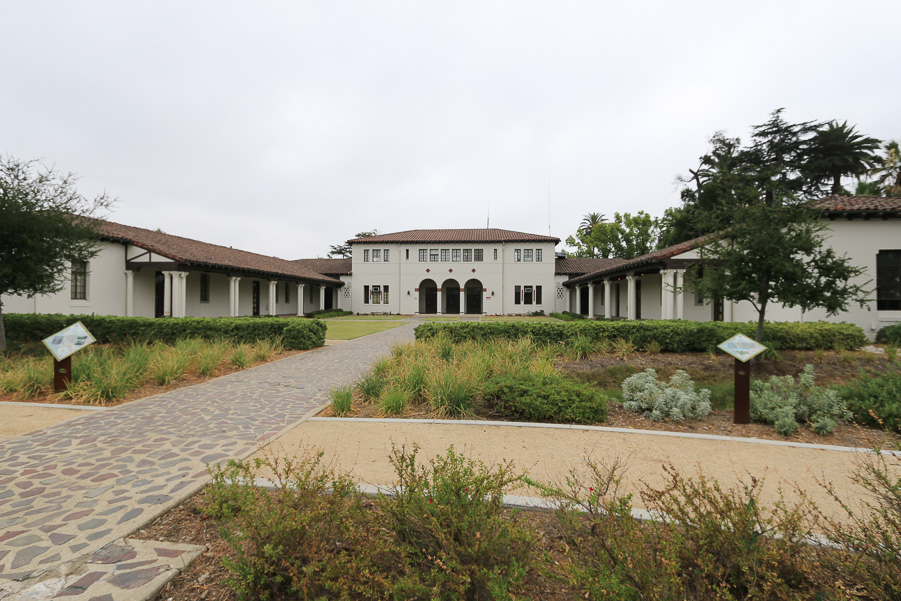
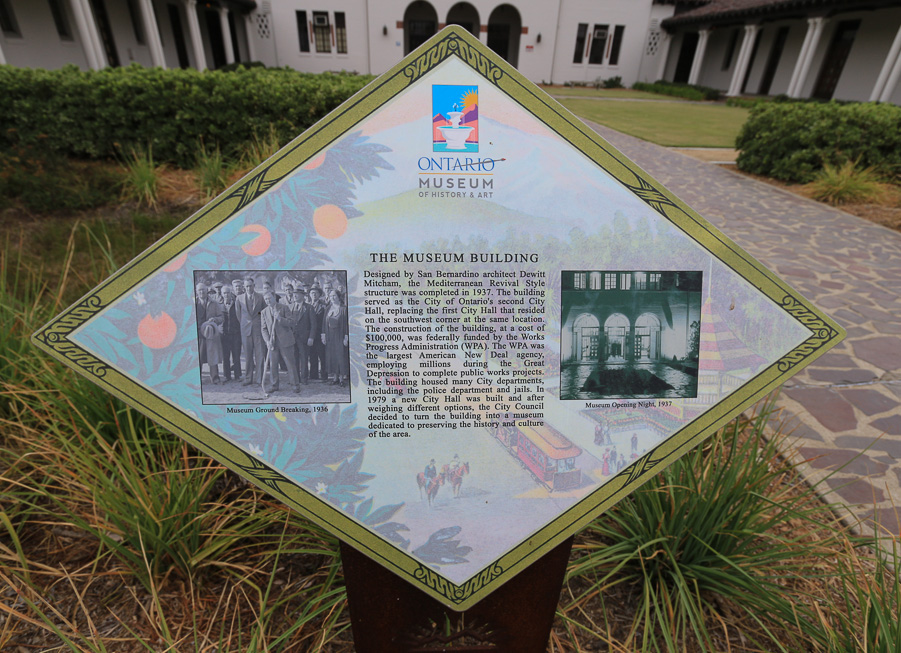
Frankish Fountain - 225 S. Euclid Ave. – Built in 1886 as a symbol of prosperity, the Frankish Fountain was originally on the Euclid Avenue median. The Chaffey Brothers would turn the fountain on as nearby trains passed to show potential buyers Ontario’s adequate water supply.

Citizens National Bank - 114 N. Euclid Ave. – This Art Deco building, built in 1939, replaced the Walker Building which had been built in 1914, and was used as a skating rink. The floor of the skating rink was incorporated into this building. Designed by architects Mitcham and Harnish.
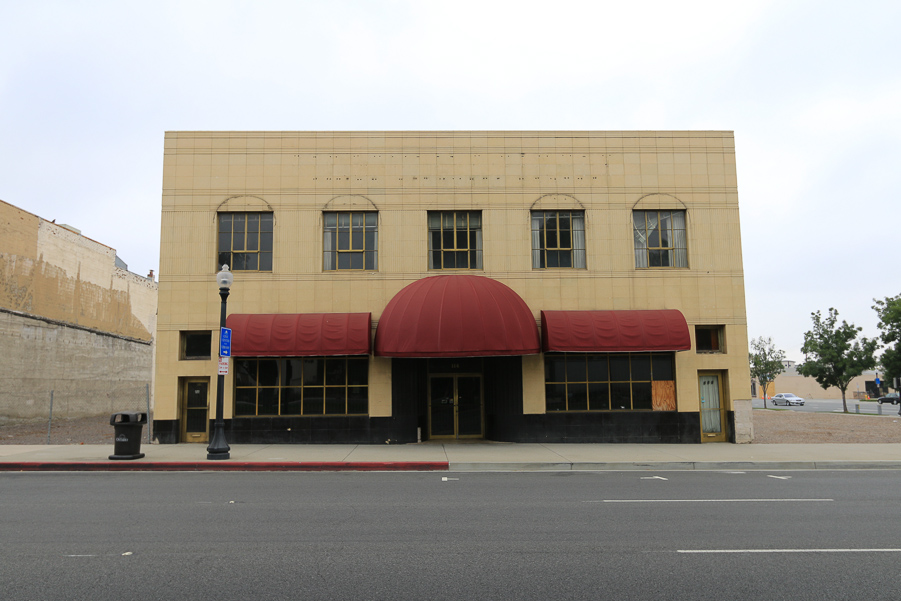
Lerch Building - 122 N. Euclid Ave. – Built in 1913 as a theatre by Jacob Lerch, the Lerch Building later became known as the “Park Theater” and then “Euclid Theater” until 1928. By 1951, the front façade of the building had been removed and altered. The only remnant from this building’s theater era is the marquees used to display movie posters.
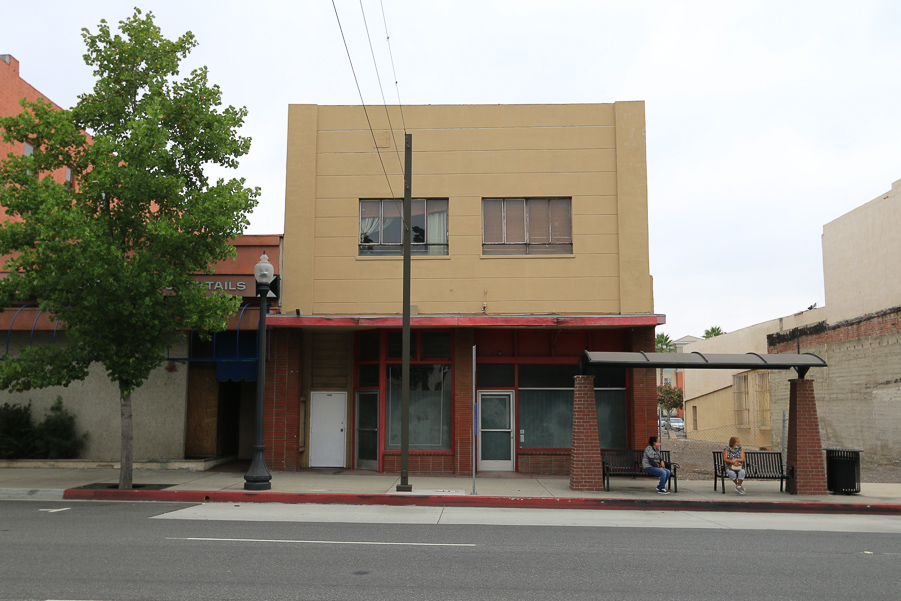
Commercial Hotel - 126-132 N. Euclid Ave. – The 50 room hotel with first floor retail was constructed in 1910 by local plumber D. Howard Akey. One year later, the property was sold to Mrs. Gribbin who operated a millinery shop from the building.
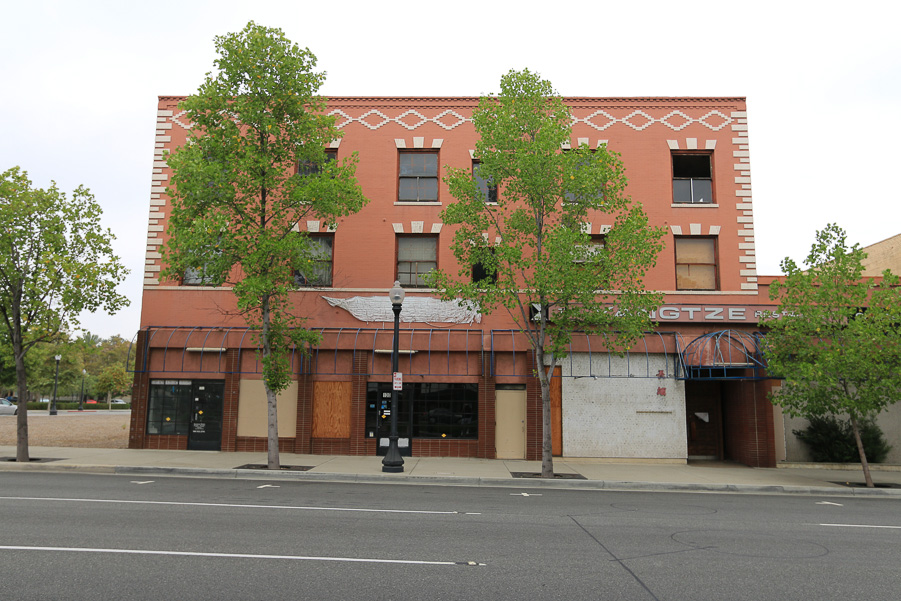
Mule Car - 100 Block N. Euclid Ave. – Ontario’s gravity mule car was constructed in 1887 and ran along the Euclid Avenue median. The mules would pull the car up the to the top of Euclid Avenue, then climb aboard a special platform built on the back of the car for the ride back down. By 1895, the system was electrified.
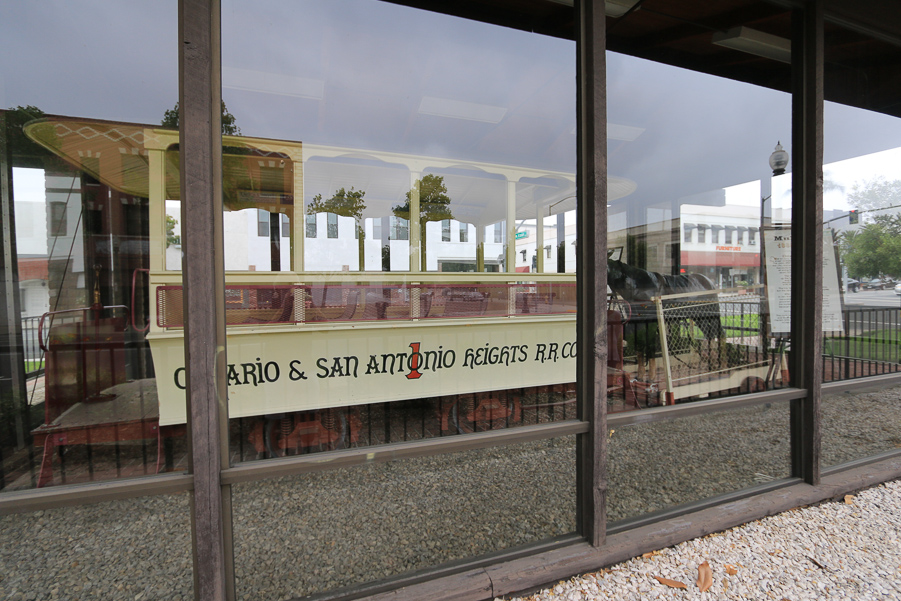
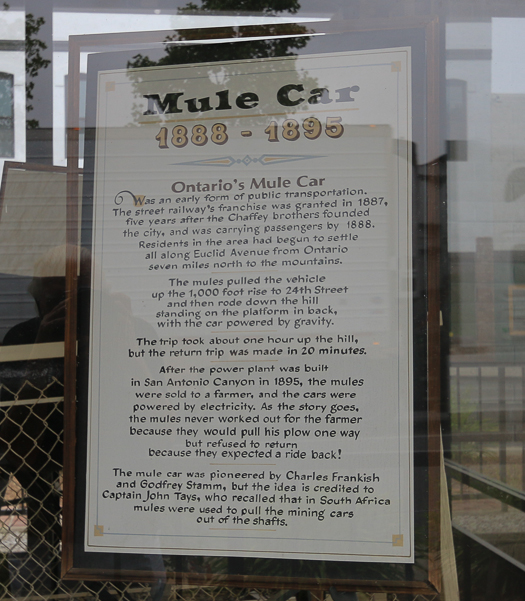
Bank of Italy - 200 N. Euclid Ave. – The Bank of Italy paved the way for modern branch banking, eventually becoming Bank of America. Secondo Guasti, Sr. and Jr. served on the Board of Directors during the 1920s.
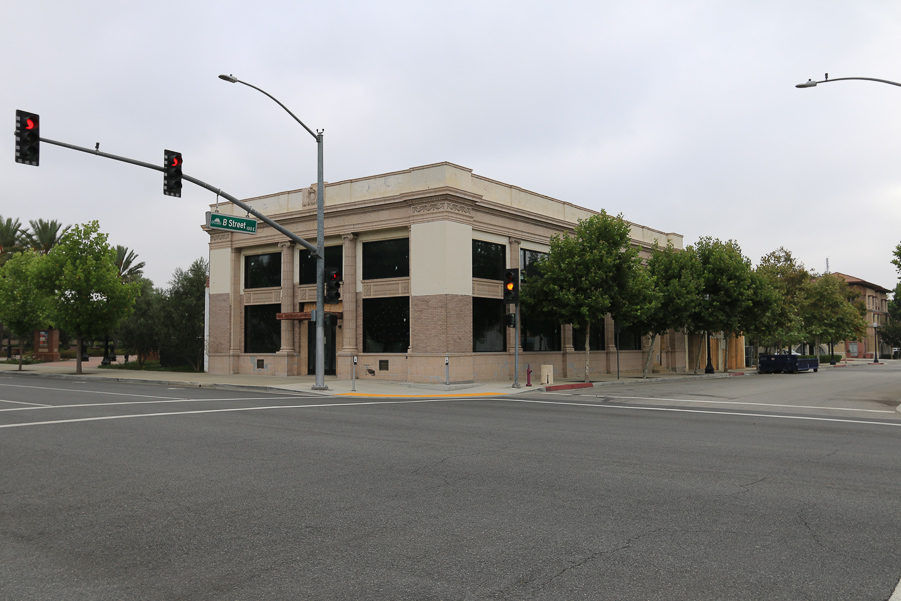

Ontario Town Square and History Mural – 224 N. Euclid Ave. — In September 2014, the City completed construction of the “Ontario Through the Years” history mural in the new Ontario Town Square. The mural highlights people, events and places significant to Ontario’s history. We really loved seeing the murals!
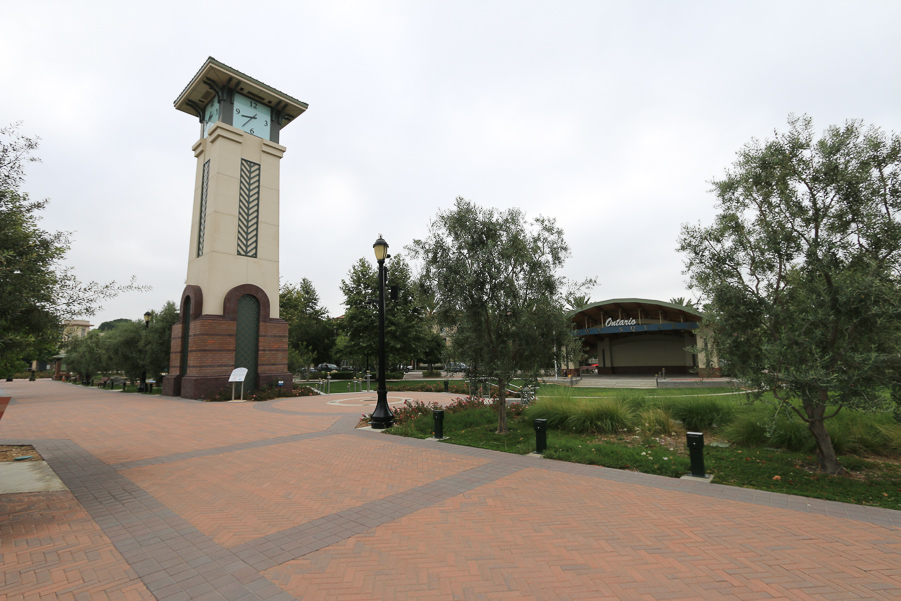
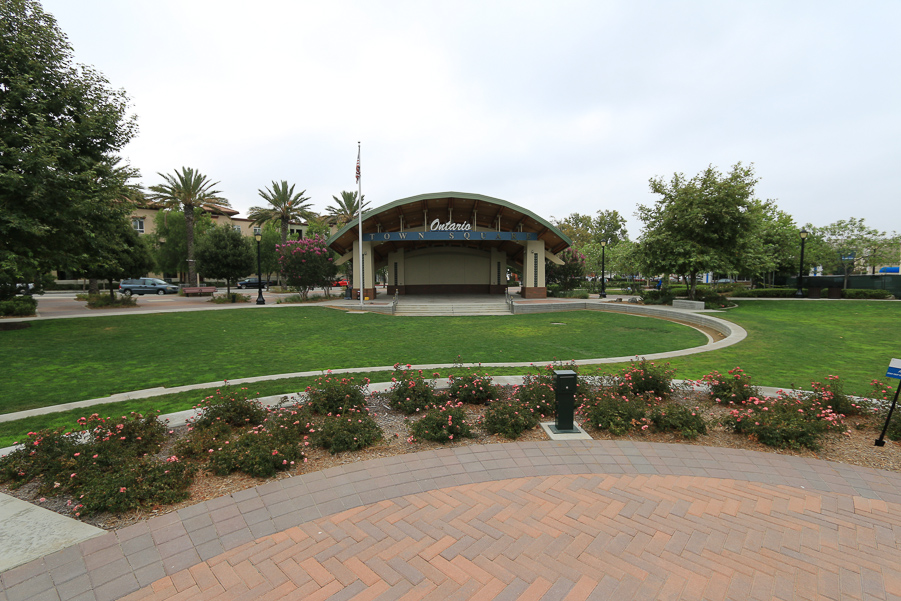

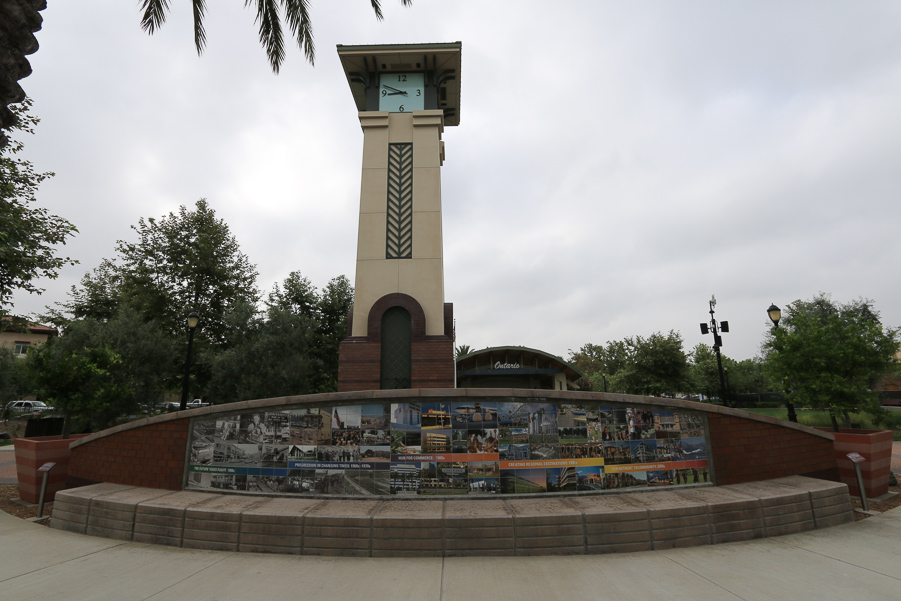
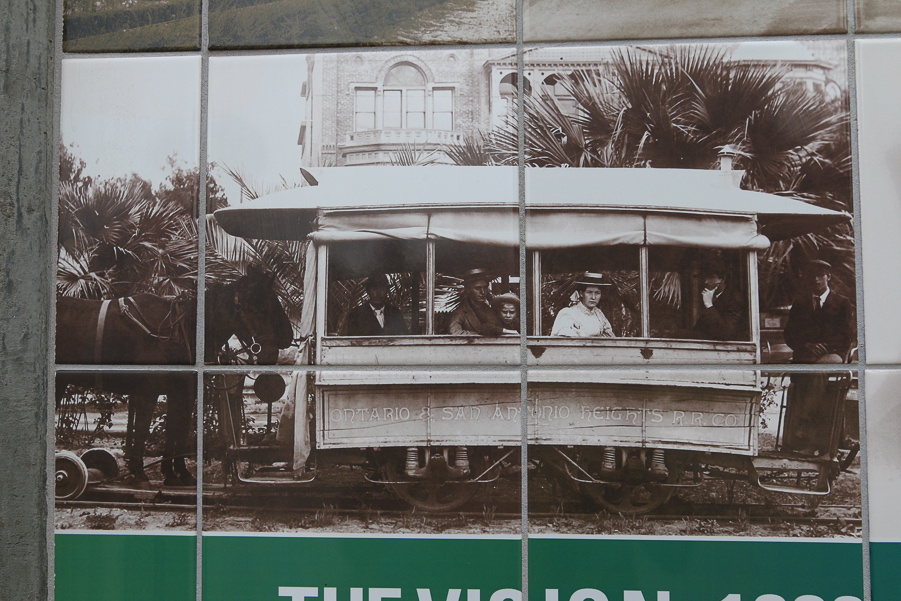
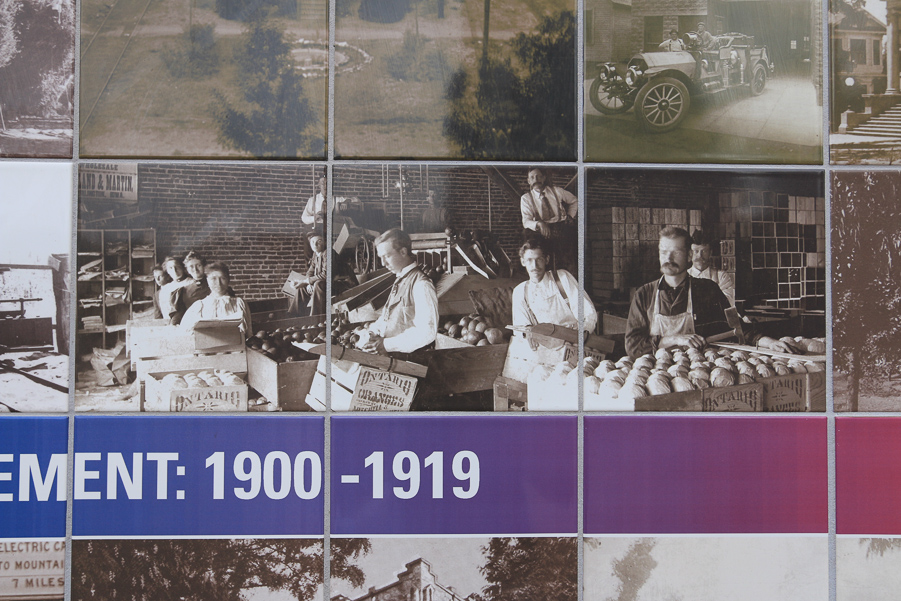

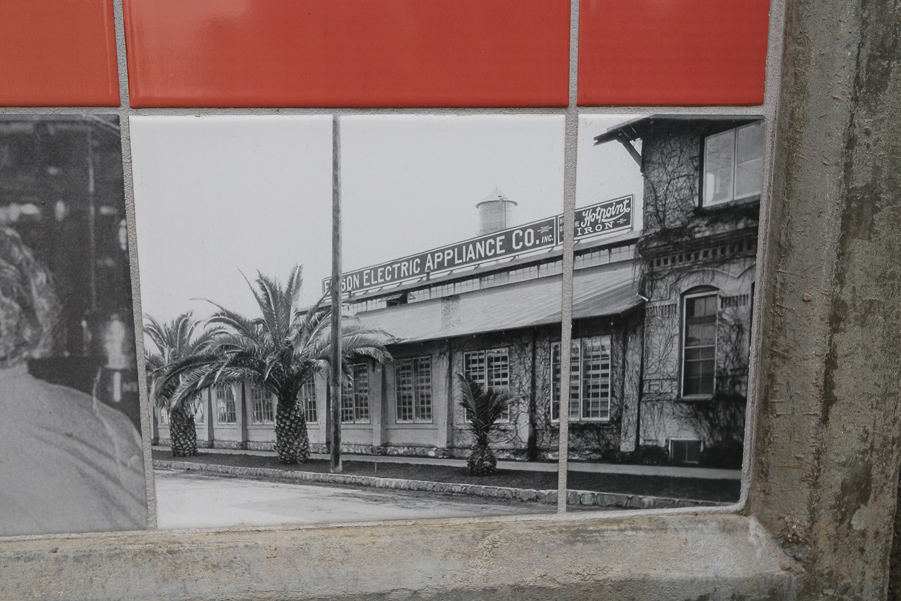

Judy remembered going to an "All States Picnic" when she was growing up. Since most people migrated to California after being born in other states, picnics were held and each state had their own picnic table, so you could catch up with others from your original home state.
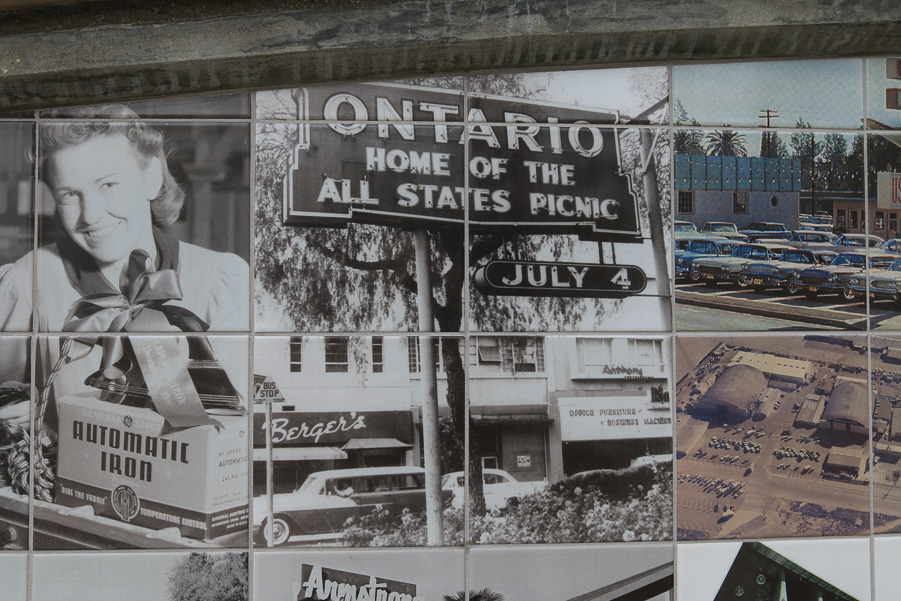
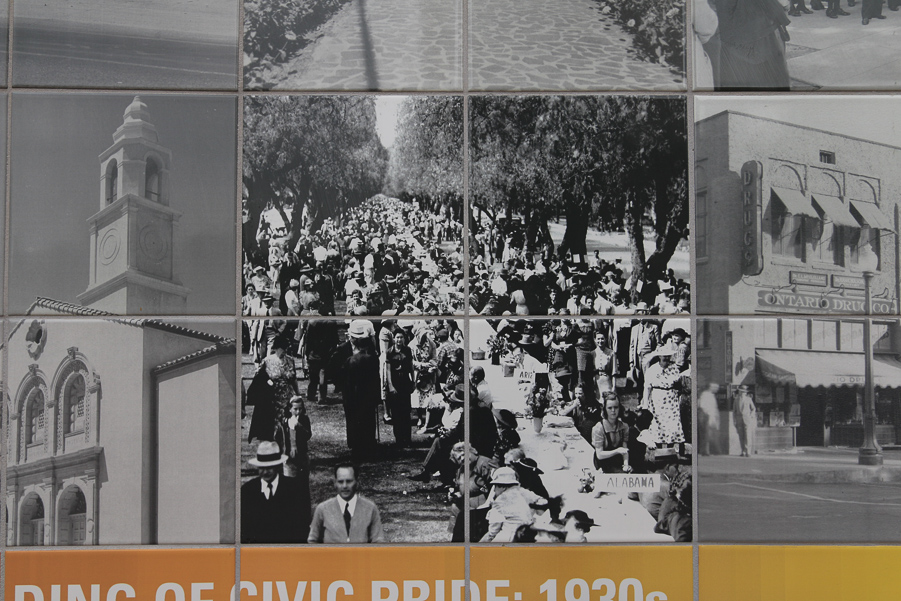
Euclid Ave. Median – Euclid Avenue was originally laid out by the Chaffey brothers as one of the main features of their Model Irrigation Colony. Euclid Avenue is a state scenic highway and is on the National Register of Historic Places (2005).
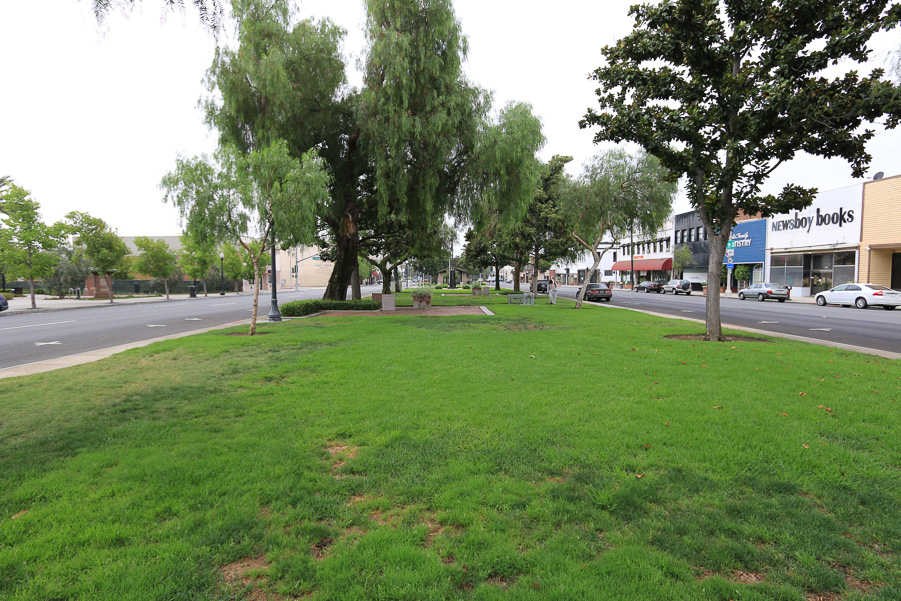
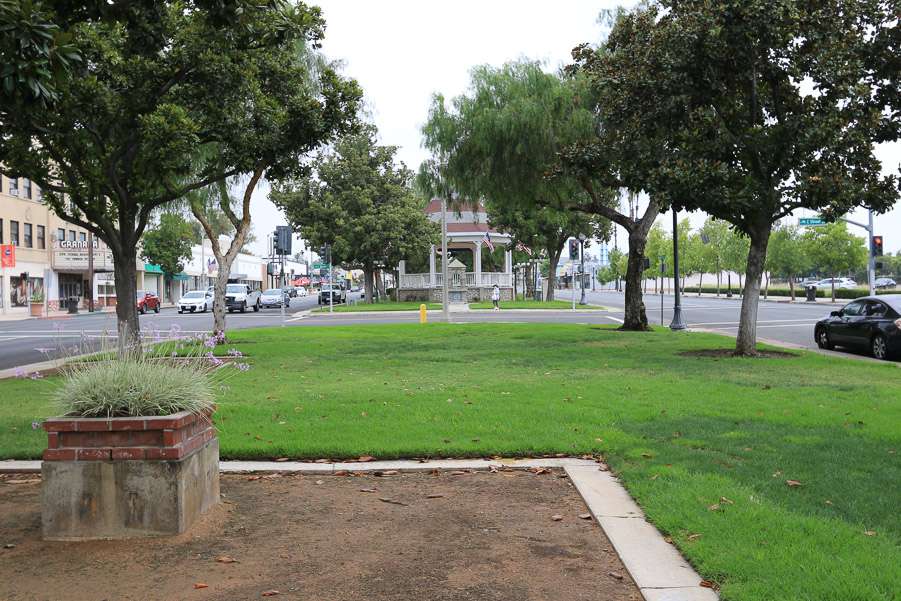
WTCU Fountain - 300 Block N. Euclid Ave. – The Women’s Christian Temperance Union constructed the fountain in 1908. It was originally located on the corner directly in front of the Citizen’s Bank so that everyone could enjoy a clear, fresh drink of water. The fountain was moved in 1916 to John Galvin Park and moved to its present location on Euclid Avenue in 1975.
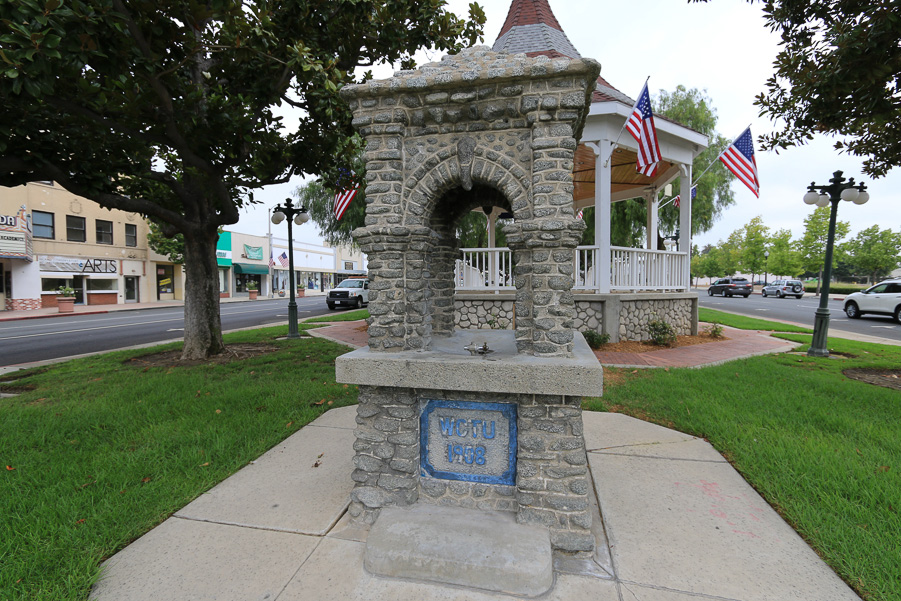
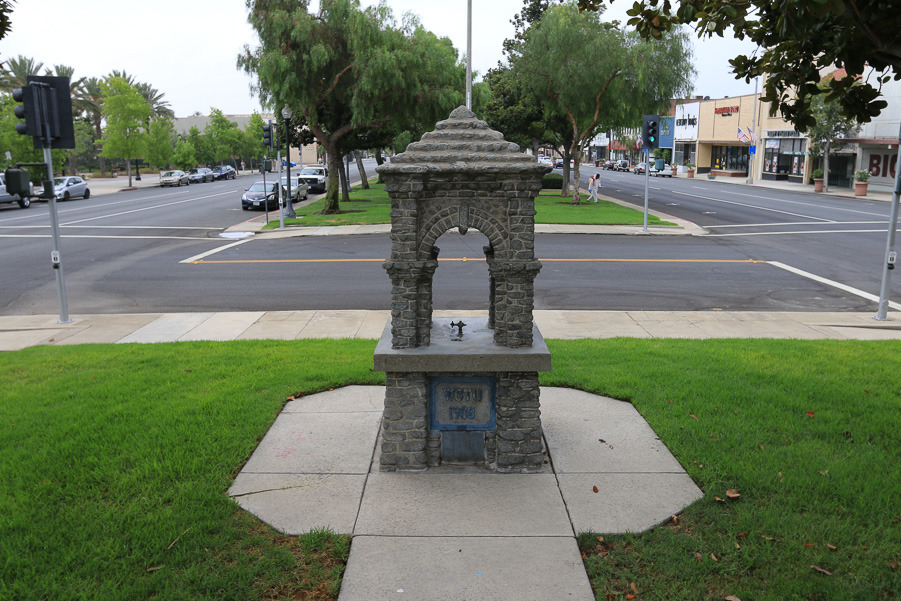
Bandstand - 300 Block N. Euclid Ave. – The first bandstand was built on Euclid Avenue in 1892, beginning a tradition of being rebuilt and moved often. The bandstand was once located on the Euclid Avenue median, just south of Holt Blvd., at Emporia Street.

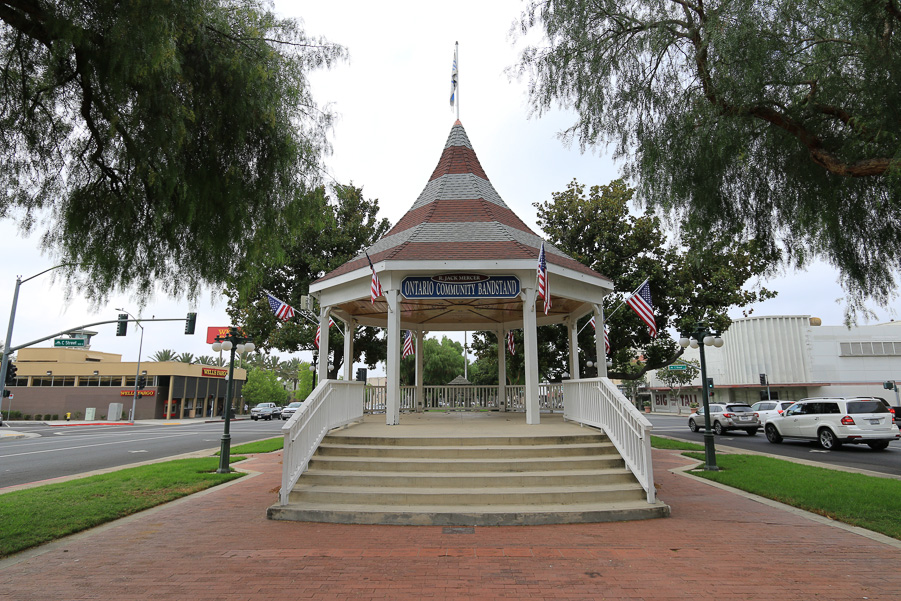
It was a very interesting adventure, especially the mule car and the history murals. We'll be back for more in a couple of weeks.
